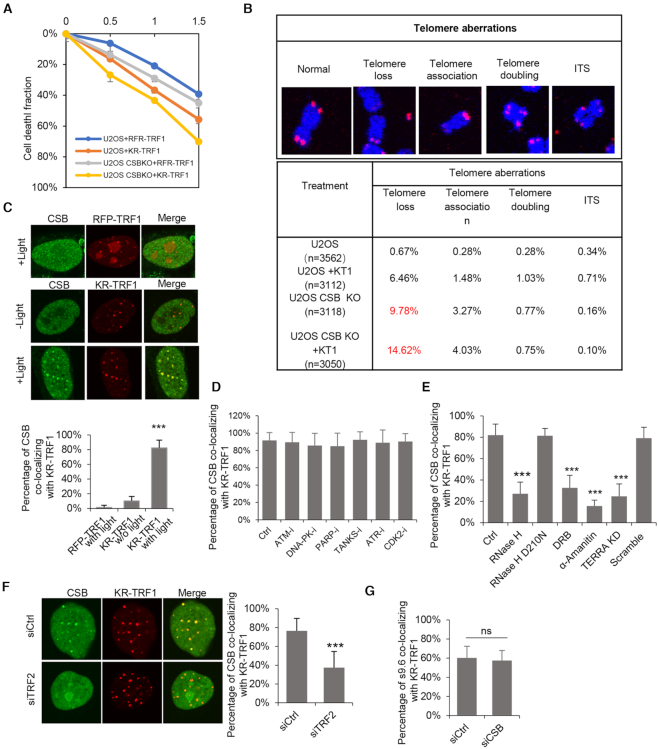Figure 2.
CSB is recruited to telomeric R-loops and contributes to cell survival and telomeric integrity. (A) Colony formation assays for U2OS and U2OS CSB KO cells with transiently expressing KR-TRF1 or RFP-TRF1. n = 3, error bars represent SD. (B) Telomere aberrations were found in U2OS and U2OS CSB KO cells with or without transiently expressing KR-TRF1. (C) Recruitment of CSB in KR-TRF1 or RFP-TRF1 expressing U2OS cells with or without light activation. Quantification of co-location frequency of myc-CSB and KR-TRF1/RFP-TRF1. (D) CSB foci co-localization with KR-TRF1 in U2OS cells treated with KU55933 (ATM inhibitor, 10 uM, 24 h), Nu7026 (DNA-PK inhibitor, 20 uM, 24 h), Olaparib (10 uM, 24 h), XAV-933(Tankyrase inhibitor,20 uM, 24 h), ATR inhibitor (10 uM, 24 h), and CDK2 inhibitor (5 uM, 24 h). (E) The staining of CSB at KR-TRF1 in U2OS cells after treating with overexpressed with HA-RNaseH WT, D210N mutant, DRB (20 μM, 24 h) and α-amanitin (100 μg/ml, 2 h), or TERRA knockdown by LNA. (F) CSB foci co-localization with KR-TRF1 in U2OS cells treated with TRF2 knockdown. (G) The staining of S9.6 at KR-TRF1 in U2OS cells after treating with CSB knockdown by siRNA. For (D)–(H), mean values with SD from 50 cells in three independent experiments are given. P-value is calculated by unpaired t-test, **P < 0.01, ***P < 0.001.

